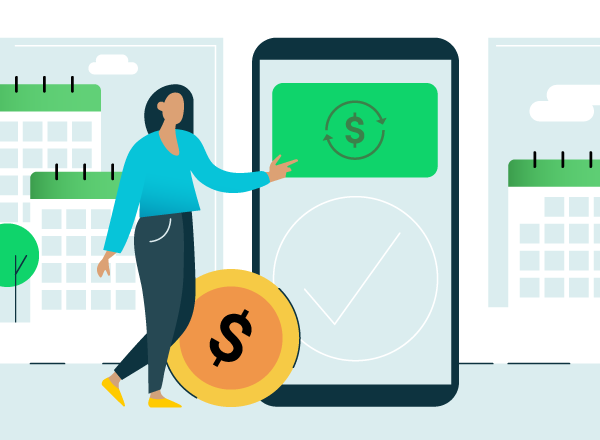Best practices for using recurring payments
The very premise of recurring billing is that it’s supposed to be easy, but that doesn’t mean you can roll it out and watch as the magic happens. There are a few best practices you should know to do this right.
1. Set payment schedules that meet your clients’ needs and your own
Setting up a billing system that works for both you and your clients is key to maintaining a healthy cash flow and ensuring client satisfaction. With QuickBooks Payments, you can customize payment schedules to fit the unique needs of each client. Whether it's deciding on a monthly, biweekly, or weekly billing cycle, flexibility is at your command.
Imagine never having to chase after payments again because your clients receive automated reminders when their payment information needs updating or their card is about to expire. This proactive communication helps prevent payment interruptions, keeping the revenue flowing smoothly and your clients happy.
2. Maintain a connection with your client
Beyond just taking payments, it's about building lasting relationships. Frequent and open communication about payment options is one way to show you understand and respect your clients' financial situations. QuickBooks Payments allows you to offer varying payment plans and frequencies, accommodating different budgetary needs which can be a relief for clients worried about cash flow.
Regular updates and easy access to modify their payment details empowers your clients, giving them control over their finances and enhancing their trust in your services. Ultimately, the health of your client relationships dictates the health of your business.
3. No setup costs or hidden fees with QuickBooks Payments
When it comes to billing, transparency is non-negotiable. With QuickBooks Payments, there are no setup costs or hidden fees to worry about. QuickBooks Payments has a straightforward pricing model: pay as you go with ACH payments at 1% and card payments at 2.99%. You choose which options to offer your clients so you can plan your finances without surprises.
See Our Rates
By implementing these strategies, not only do you streamline your payment process, but you also strengthen the client-business relationship, fostering loyalty and ensuring ongoing engagement.
4. Ensure payments for your clients
Since your client will be sharing their bank or credit card information, look for a provider with a secure payment portal. This will allow your clients to independently enter their own payment information and you won’t need to store and maintain card on file paperwork.
This also plays into ensuring your business policies are transparent. If you fail to make sure this private data is secure and you aren’t transparent, you can risk losing customers and hurting your reputation.

















